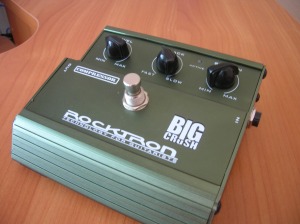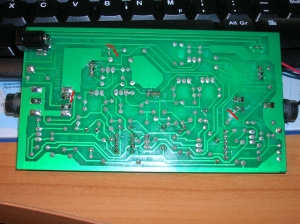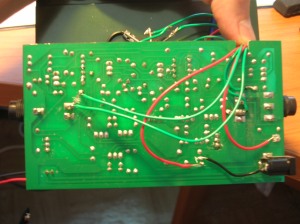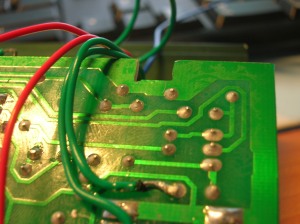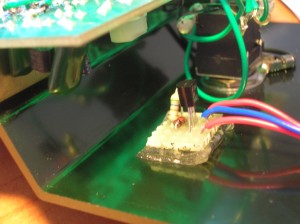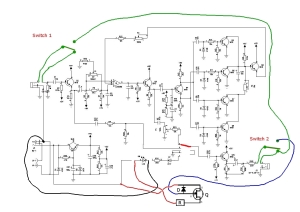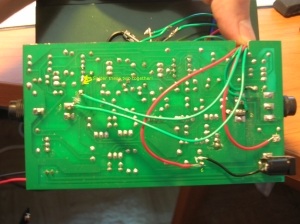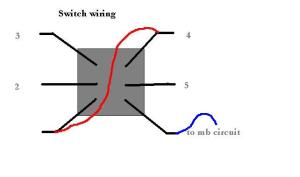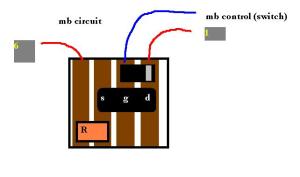My Dynacomp clone lacked a little high end, so I decided to add a simple eq circuit to it. While I was at it I also wanted to boost the output of the pedal a bit.
One of the simplest ways to change the frequency response of a circuit is to add an RC or CR filter.
In the RC version the higher frequencies are cut, as they are grounded through the capacitor. The other version allows higher frequencies to pass through, but the lower ones are cut.
A common circuit used in many pedals combines these two filters and a potentiometer to blend between the outputs, usually referred to as the “Big Muff Tone Control”, after the famous fuzz pedal.

The original Big Muff had something of a mid scoop, as both filters cut the midrange. In my version its possible to get a flat frequency response, a mid boost or a mid cut.

Please note that the volume pot (R7) was included in the original circuit. The eq/boost-circuit connets between the compressor pcb output and the volume pot.
The tone control still controls which filters output the signal is taken from, but it’s combined with a 3-way switch. The switch is a 2xON-OFF-ON switch, which is basically the same as a DPDT-swich, but in the centre position, both switches are off. The first half of the switch adds a second capacitor in parallell with the capacitor in the high-pass (CR) filter. The other half of the switch bypasses a capacitor in series with the capacitor in the low-pass filter. This changes the mid response from a slight boost in top position, flat in middle position and quite a large mid-cut in the down position. Values of capacitors where tweaked using the duncan tone stack calculator, a very useful free software for simulating eq circuits.
The second half of the circuit (from C5 onwards) is a buffer/output booster to compensate for the gain loss that is inherent to every passive eq circuit. It’s a common design using a J201 JFET. The gain of the output stage is determined by the ratio of resistors 5 and 6.
Here’s everything except the switches and the potentiometer placed on a piece of stripboard:

And here’s the board crammed into the already crowded pedal box, with no less than 11 (!) cables attached to it:

How does it sound? It sounds good. This modification made an already good pedal even better.
The circuit described above could be added to pretty much any pedal, as long as it’s connected to a source with a reasonably low output impedance. (that is, not directly to a guitar pickup, but to anything buffered). It should work on its own with a proper input buffer also, as a simple buffer/booster/tone control.















